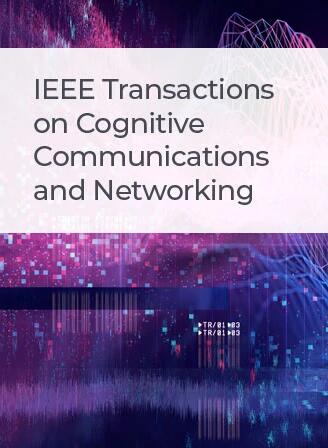生成式ai驱动的RSMA网络语义通信激励机制
IF 7
1区 计算机科学
Q1 TELECOMMUNICATIONS
IEEE Transactions on Cognitive Communications and Networking
Pub Date : 2025-04-01
DOI:10.1109/TCCN.2025.3556751
引用次数: 0
摘要
本文提出了一种集成速率分割多址(RSMA)、语义通信和生成式人工智能的框架,用于优化下一代无线网络。我们提出了一种将RSMA与语义通信相结合的统一模型,以提高频谱效率和语义保真度。我们的系统模型侧重于一个多天线基站服务多个单天线用户的下行链路语义通信系统。针对语义RSMA场景下的用户异质性和信息不对称问题,提出了一种基于契约的动态激励机制。提出了一种基于扩散模型的RSMA系统资源配置与契约设计联合优化方法。语义编码过程从图像数据中提取关键信息,即自由空间检测、兴趣点、对象属性和空间关系。设计了一个损失函数来训练语义编码器和RSMA方案,包括语义提取、划分、重建和任务特定组件。我们的框架包括一个多目标性能评估,该评估考虑了多用户RSMA环境中的传统指标和语义准确性。我们还定义了一个多分量语义精度度量来评估提取的语义信息的质量和效用。广泛的仿真结果表明,我们提出的框架在系统吞吐量、能源效率和跨各种网络场景和用户分布的语义保真度方面优于现有方法。本文章由计算机程序翻译,如有差异,请以英文原文为准。
Generative AI-Driven Incentive Mechanism for Semantic Communications in RSMA Networks
This paper proposes a framework integrating Rate Splitting Multiple Access (RSMA), semantic communications, and generative AI for optimizing next-generation wireless networks. We present a unified model that combines RSMA with semantic communications to enhance both spectral efficiency and semantic fidelity. Our system model focuses on a downlink semantic communication system with a multi-antenna base station serving multiple single-antenna users. A dynamic contract-based incentive mechanism is developed to address user heterogeneity and information asymmetry in semantic RSMA scenarios. We introduce a diffusion model-based approach for joint optimization of resource allocation and contract design in RSMA systems. The semantic encoding process extracts key information, i.e., free-space detection, interest points, object attributes, and spatial relationships, from image data. A loss function is designed to train the semantic encoder and RSMA scheme, incorporating semantic extraction, partitioning, reconstruction, and task-specific components. Our framework includes a multi-objective performance evaluation that considers both conventional metrics and semantic accuracy in a multi-user RSMA environment. We also define a multi-component semantic accuracy metric to assess the quality and utility of the extracted semantic information. Extensive simulation results demonstrate the superiority of our proposed framework over existing approaches in terms of system throughput, energy efficiency, and semantic fidelity across various network scenarios and user distributions.
求助全文
通过发布文献求助,成功后即可免费获取论文全文。
去求助
来源期刊

IEEE Transactions on Cognitive Communications and Networking
Computer Science-Artificial Intelligence
CiteScore
15.50
自引率
7.00%
发文量
108
期刊介绍:
The IEEE Transactions on Cognitive Communications and Networking (TCCN) aims to publish high-quality manuscripts that push the boundaries of cognitive communications and networking research. Cognitive, in this context, refers to the application of perception, learning, reasoning, memory, and adaptive approaches in communication system design. The transactions welcome submissions that explore various aspects of cognitive communications and networks, focusing on innovative and holistic approaches to complex system design. Key topics covered include architecture, protocols, cross-layer design, and cognition cycle design for cognitive networks. Additionally, research on machine learning, artificial intelligence, end-to-end and distributed intelligence, software-defined networking, cognitive radios, spectrum sharing, and security and privacy issues in cognitive networks are of interest. The publication also encourages papers addressing novel services and applications enabled by these cognitive concepts.
 求助内容:
求助内容: 应助结果提醒方式:
应助结果提醒方式:


